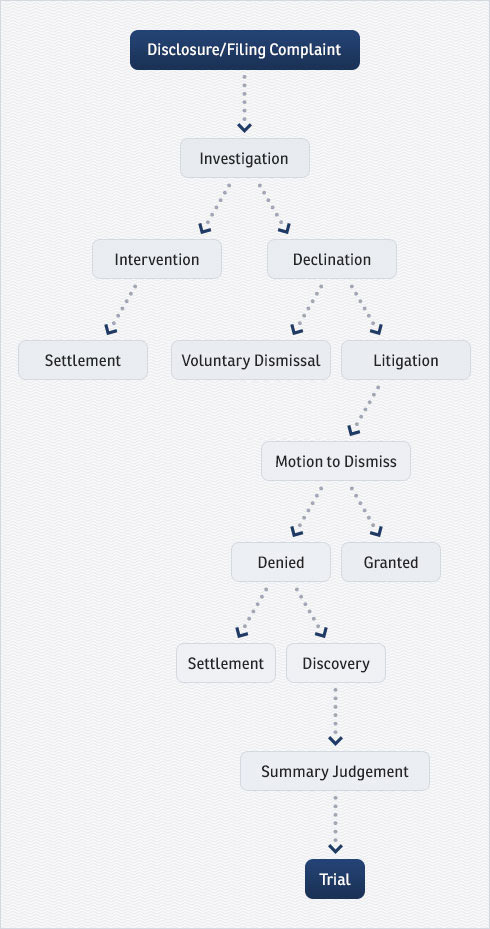Also, at the beginning of the case (and possibly for the next months or even years) the government will be investigating the case, and the government will eventually make a decision whether to “intervene” in the case (i.e., take it over) so it is important that your lawyer has a good relationship and reputation with government attorneys and investigators.
A qui tam lawsuit generally follows one of two main “paths” – government intervention and settlement, or government declination and (if the relator chooses to continue the case) litigation.
The most successful qui tam lawsuits usually result when the government “intervenes” in the case, or takes it over from the relator, after investigating it. Most defendants decide to settle if the government intervenes. The government may also “decline” to intervene, or decide to wait to make a determination. If the government declines to intervene, it does not mean that the case lacks merit; it may just be that the government lacks resources to devote to the case. In those circumstances, the relator has the right to litigate the lawsuit him- or herself.
The lawsuit first gets filed “under seal,” which means it is kept a secret from the defendants, that is, the companies and/or people being sued. This gives the government time to investigate the case without “tipping off” the defendant. Along with filing the lawsuit, the relator and his or her lawyer give the government a “disclosure” of the relator’s information about the fraud, including documents. Along with the complaint, the disclosure should give the government a “roadmap” of the fraud, helping the agents’ investigation. Generally, the more proof of fraud that the relator and his or her lawyer can provide the government in their disclosure at the beginning of the case, and the more assistance they provide the government during the investigation, the more likely it will be for the government to intervene and settle the case.






